Zhenjiang Jinshan Temple
Jinshan Temple was built in Jinshan Mountain on the South Bank of the Yangtze River in Zhenjiang City, Jiangsu Province, at the time of Emperor Ming of the Eastern Jin Dynasty. Jinshan Temple is laid out in accordance with the situation of the mountain, so that the mountain and the temple are integrated. On the top of the Jinshan Mountains stands the Cishou Pagoda, Jiangtian Landing Pavilion and Liuyu Pavilion, while the big and small Guanyin Pavilion surrounds the top of the mountain.
Qifeng Pavilion, Miaogao Platform and Lengge Platform surround the mountainside; Fahai Cave, Immortal Cave, Bailong Cave and other mosaic mountainside; Daxiong Palace site, Tianwang Hall, Tibetan Sutra Building, Buddhist chanting hall, Abbot hall are adjacent to the top of the mountain; various buildings are connected by curved corridors, cornices and stone levels, forming a unique pattern of "temple-wrapped mountain" with pavilions on the tower, outside the building and pavilions. There are many historical allusions and moving legends in Jinshan Temple. The legend of White Snake floods Jinshan Mountain, Liang Hongyu beats Jinshan with drums, and Su Dongpo of Miaogao Tai enjoys the moon and dances. In order to reproduce the brilliance of White Snake Biography, Zhenjiang has invested heavily in creating China's first mythological water-view show, which takes Jinshan Temple as the background and perfectly presents the story of "White Snake Biography" flooding Jinshan Mountain with modern techniques.
Brief Introduction of Jinshan Temple
Jinshan is located about 4 kilometers northwest of the city center, 43.7 meters above sea level, covering an area of 10 hectares.
Jinshan was originally an island in the Yangtze River, Du Guangting of Tang Dynasty said "Wanchuan East Note, an island is neutral"; Shen Kuo of Song Dynasty said "the two sides of the tower are connected by water, while the north and south of the river are mirrored in the sky"; and Shisheng of Qing Dynasty said "Jiangguangfu Island, Tanyin Baptist Platform". It was not until the 1970s that Jinshan gradually became connected to the South bank. Jinshan is famous for its beautiful scenery. The temples are magnificent and magnificent, with towering peaks and pointing directly to the clouds. Whether you look at the sky from a close perspective or from a distant perspective, you can always see the temple without seeing the mountain. The saying that "Jinshan Temple surrounds the mountain", the Longevity Mountain of Beijing Summer Palace, the "Tianyu Xianchang" of Chengde Summer Resort, and the "Xiaojin Mountain" of Slender West Lake in Yangzhou draw lessons from this kind of "mountain is surrounded by temples" and "tower is elevated by mountains". ” Architectural art. Jinshan Mountain is famous for many things. The Jin Dynasty was called "Zexin" because of its isolation of the river's heart; the Fengshui World War I in the Eastern Jin Dynasty changed its name to "Di Jiao"; and because of its Jasper floating water, the North and South Dynasties had a good name of "Fuyu"; in the Tang Dynasty, Fahai monks were known as "Jinshan" because they excavated gold; in the early Song Dynasty, it was also called "Zijin Mountain" and in the Zhenzong Dynasty, it was renamed "Longyoushan", and so on.
Jinshan is situated on the South Bank of the Yangtze River in the northwest of Zhenjiang City. It has a majestic mountain and beautiful scenery. It has the reputation of "the best winners in the south of the Yangtze River". Jinshan Temple is built on the hillside, from the foot of the hill to the top of the hill. The palaces and buildings are connected by each other. The stairs are stacked, the corridors are winding and the pavilions are connected. The whole mountain is closely wrapped up. Looking far into Jinshan Temple, we can only see the magnificent complex of temple buildings and the towering Cishou Pagoda, which can not see the mountain, so it is called "Jinshan Temple wrapped in the mountain". It contrasts sharply with "Jiaoshan Baosi" of Dinghui Temple in Jiaoshan.
History of Jinshan Temple
Jiangtian Temple, also known as Jinshan Temple, is a national key Buddhist temple in the Han nationality area determined by the State Council. It was built in the Eastern Jin Dynasty. "Jinshan Zhi" contains: "There are Buddhist temples in the mountains, which were built at the time of Emperor Jin and Ming Dynasty." That is 323-325 years, the first name of Zexin Temple. During the four years of Emperor Liang Wudi's Tianjian (505) in the Southern Dynasty, Emperor Liang Wudi held a grand meeting of water and land law in Jinshan. Song Zongjian's "Shimen Orthodoxy" contains four volumes: "The so-called land and water people, because of the dream of Emperor Wudi Liang, the first priest said:"Six paths and four lives, suffer immeasurably, do not protect the land and water (Dazhai) Puji group spirit? "The emperor went to the public to persuade him to search for bamboo leaves and to visit them in the morning and at night; and the king of ghosts who was in distress set up the idea of equal canopies to eat, and so on. With ceremonial writing, he built the Jinshan Temple in Runzhou (today's Zhenjiang). Emperor bowed to the ground and ordered monks to bless Zen Master Xuanwen. This is the beginning of the Land and Water Law Society held by Chinese Buddhism. Jinshan Temple is also famous all over the world.
The Land and Water Law Society, also known as the Land and Water Daochang and Sadness Religion, is one of the most solemn rituals in the Buddhist Confessions in China. After the Song Dynasty, it became popular all over the country, including chanting sutras, setting up fasts, offering sacrifices to Buddhas, and recommending the dead. The main activities include sprinkling the results, sending the envoys, asking to go to the hall, offering to go to the hall, offering to go to the hall, offering to go to the hall, offering to bathe, giving food, giving precepts, and giving sacrifices. These legal activities should be held for at least seven days and nights, with a maximum of 49 days. The number of monks participating in legal activities is 48, mostly hundreds, which is very solemn.
During the seventh and eighth years (1084-1085) of Yuanfeng in the Song Dynasty, when the famous monks and Buddhas lived in Jinshan Temple, Haijia came to the temple to set up a water and land law club, which was sponsored by the Buddha and India themselves, and was well-known as "Jinshan, Shuilu and Lu". In the ninth year of Qianlong Road in the Southern Song Dynasty (1173), Shihao of the Four Ming Dynasty tasted Jinshan Temple in Zhenjiang and admired the prosperity of the water and land road field. Shitian Baimu was built in Yueboshan, East Lake of the Four Lu.
During the three years of Yanyou (1316) in the Yuan Dynasty, the imperial court held a grand land and water course at Jinshan Temple, ordering the three schools of Buddhism, Zen and Law to speak and attend 1500 monks. In the second year of Zhizhi (1322), another large-scale land and water law association was held. Zhengyin "Jinshan General Assembly Hall" said: "Jinshan General Assembly, is not a small margin. Mountain monks and forty-one good knowledge, fifteen hundred monks, together into the Tathagata Daguang Tibet, each saying the same way, to promote the first meaning. It can be seen that Jinshan Temple's Waterway and Land Road Ground has enjoyed a great reputation in history.
Because of the special status of Jinshan Temple in the history of Chinese Buddhism, it has been paid more attention by all dynasties. After Wu Zetian's nephew Sun Lingtan became a monk in the Tang Dynasty, he was the abbot of Jinshan Temple, and Peixiu's son was also the abbot of Jinshan Temple. Song Shenzong gave the Golden Bowl to the abbot of Jinshan as a Buddhist seal. The emperors of the Yuan Dynasty held a water and land Congress here, which was highly rewarded. When Shi Che was abbot of Jinshan in Ming Dynasty, he preached precepts for ten thousand people and the Emperor gave him a robe. Emperors Kangxi and Qianlong of the Qing Dynasty visited Jinshan Temple many times, inscribed poems and presented treasures of Tibetan scriptures.
Jinshan Temple mainly spreads Zen Linji Sect, and is called the four jungles of Zen Sect together with Gaohuang Temple, Tianning Temple and Tiantong Temple. In the Preface to the Return of the Golden Mountain of the Zen Temple in Giving Wen Hai in Ming Dynasty, Zhou Zen said: "Since the past dynasties, the monks and monks have gathered together, and those who want to advocate the Tao of the old Buddhist Temple often lie here, and they are the crowns of the four places to shake the temple." The Jinshan Temple has many high-ranking monks in the past dynasties, including Lingtan and Fahai in Tang Dynasty, Buddhist seal and treasure seal in Song Dynasty, Yingshen and Xingduan in Yuan Dynasty, integrity and clarity in Ming Dynasty, and Happy, Ming interpretation, Guanxin and hermit Confucianism in Qing Dynasty. In modern times, there were Zongyang, Taixu and so on.
Jinshan Temple is not only a famous Buddhist temple, but also contains many precious cultural relics. Nowadays, the most famous cultural relics of Jinshan Temple are the Jade Belt on the eastern slope of Jiangsu Province, Zhuge Liang's war drums, the Jinshan map and Zhou Ding, which are also called "Four Treasures of Jinshan". Politicians, writers, poets, painters such as Wang Anshi and Su Shi have visited Jinshan many times, leaving behind many poems, paintings and inscriptions, some of which have become eternal singers.
Tang Dynasty poet Zhang You's poems say:
Jinshan Monastery in Yisui, a tiny water state; monks return to the night, boat moon, dragon Xiaotangyun;
In the shadows of trees, Zhong Ru is heard on both sides of the Taiwan Strait; because of grief in the city, he is drunk at last.
Wang Anshi, a statesman of Song Dynasty, wrote a poem titled Jinshan Temple with great momentum.
Every day the vast sea and deep air, a ship to the west to boarding here;
Danlou Bige is a current event, only Jiangshan to ancient and modern.
Su Dongpo has visited Jinshan many times, and has close contacts with Buddhist seals, Baojue, Yuantong and other mages. Song Shenzong Yuanfeng eight years (1085), the Mid-Autumn Festival, Dongpo with friends re-visit Jinshan, Jiangtao rolling, moonlight picturesque, life-long singing of the Nine Years of Xining (1076) in Mizhou's ancient masterpiece "Water Tune Song Head":
When will the moon be clear and bright? With a cup of wine in my hand, I ask the blue sky.
I don't know what season it would be in the heavens on this night?
I want to return in the wind, and fear the Qionglou Yuyu, the height of the cold.
Dance to figure out the shadow, how it looks in the world! ___________
The moon rounds the Red Mansion Stoops to silk-pad doors, Shines upon the sleepless Bearing no grudge.
Why does the moon tend to be full when people are apart?
People may have sorrow or joy, be near or far apart, the moon may be dim or bright, wax or wane, This has been going on since the beginning of time.
I wish you a long life.
Su Dongpo also inscribed a Hui style poem for Jinshan Temple, describing the charming scenery of Jinshan Temple.
Tides fall with dark waves and snow mountains, Yuanpu fishing boat fishing moonlight.
The bridge opposite the temple gate has a small loose diameter and a clear sill.
Long distance green tree river dawn; gray red clouds sunny evening.
Looking at the clouds on all sides to catch water, Bifeng thousand-point gulls are light.
Since the Eastern Jin Dynasty, Jinshan Temple has gone through vicissitudes of life, and has been used by famous Jiangxin Temple, Zexin Temple, Longyou Temple and so on. In 1948, a fire broke out and Daxiong Palace and Tibetan Sutra Building were destroyed in one torch. Since 1949, the government has allocated several funds to renovate the temples, especially since the Third Plenary Session of the Eleventh Central Committee of the Communist Party of China, the Jinshan Temple has been re-entrusted to the management of Buddhist groups, and the temples have been completely renovated. Under the leadership of Abbot Cizhou, construction began in 1985 to rebuild the Daxiong Palace. In 1990, the palace was completed and the opening ceremony of the Buddha statue was held. The newly built Daxiong Palace not only maintains the architectural characteristics of Buddhist temples, but also adopts reinforced concrete structure, Xieshan heavy eaves, flying rafters and domes, carved beams and painted pillars, which is strong and solemn. Red colonnade, yellow glazed tile, inside and outside are exquisite paintings. Decorate the interior and exterior of the palace with brilliance. Three great Buddhas, Sakyamuni, Amitabha Buddha and Pharmacist Buddha, are sitting on the lotus pedestal in the middle of the sacrifice with a serene manner. On both sides are the figures of 18 Arhats, with different and vivid expressions. Behind the great Buddha is a huge statue of the island, among which the Buddha, Bodhisattva and Buddhist nurses of the Third Decade are hidden. There are eighteen statues on the sea. Guanyin on the island is the dominant figure. On both sides, she serves good fortune and dragon girls. The statue is solemn. In the middle of the hall hangs the gold-lettered plaque collar of "Daxiong Palace" inscribed by Mr. Zhao Puchu. In the temple, there are the main halls such as the Temple of Heavenly King, the Hall of Galan, the Hall of Grand Master, the Huazang Building, the Pillow River Building, the Guanlan Hall, the Yongan Hall, the Haiyue Tower, and the Dacheng Hall, the Three Forbidden Hall and the Yujian Hall. Most notable is the Cishou Pagoda on the top of Jinshan Mountain.
Cishou Pagoda was first built in the Qiliang Dynasty of the Southern Dynasty. It was originally two pagodas, standing opposite north and south, and then collapsed. During the reign of Song Zhe Zong and Yuan Fu (1098-1100), an octagonal seven-storey tower was built. Ming Lang Longqing three years (1569), Ming Master reconstruction, Tongzhi Qing Dynasty, Guangxu years to repair. The existing tower was built in Guangxu 26 years (1900), with brick eaves, imitation pavilions, seven levels and eight sides, and four doors on each level. On the stairs, there are corridors and railings on each floor, which can be viewed from the railings and have a picturesque view. The East is charred like the Jade River, the south is lush and lush, and the west is sparkling with golden mountain fish pond. In the north, Guazhou Gudu looms in the smoke waves. Wang Anshi vividly depicts the feeling of climbing the tower in his poem Jinshan:
The pillow layer stone of several buildings, the open surface wind of four-wall windows;
Suddenly the bird flew flat on the ground. Start startled in midair.
There are also four famous caves in Jinshan: Fahai Cave, Bailong Cave, Chaoyang Cave and Xianren Cave. Among them, the Fahai Cave is the most famous one, in which the statues of Fahai monks are worshipped. Pei, the common name of Fahai, was the son of Pei Xiu, a distant relative of Xuanzong in Tang Dynasty. When he first came to Jinshan, the temple was destroyed, weeds were growing, and a white Python often came out on the cliff to hurt people. People dared not go up to the mountain to burn incense. Fahai bravely fought with the boa constrictor and drove the boa constrictor into the river. He burned his fingers and was determined to restore the ancient temple. With the support of the monks and the surrounding people, Fahai Temple has been renovated as "Peizu Kaishan". After the Fahai was dead, the disciples carved this statue of Fahai in the cave where he was sitting to worship him.
There are legends among the people that Fahai monks rely on their supernatural powers to interfere in young people's marriage. The Legend of White Snake makes Fahai a well-known figure. Its legendary color conceals its original appearance as the ancestor of Jinshan Temple and a generation of famous monks.
Jinshan Temple and Japanese Buddhist circles also have a deeper origin. Since the Tang Dynasty, many Japanese monks have come to Jinshan Temple to study Buddhism. In Tang Dynasty, Guyuan, Shaoyuan and other monks from Song Dynasty, Rongxi, Chuexin and Chengxun all visited Jinshan Temple, which contributed to the exchange of Buddhist circles between China and Japan.
Legends of Jinshan Temple
Water overflows golden hill
In the hearts of ordinary people, the reason why Jinshan Temple is known is because of the folklore "Legend of White Snake". It is said that there is a white snake, a beautiful and kind white lady, who married young Xu Xian and lived a very sweet life. Knowing this, Buddhist monk Fahai of Jinshan Temple lobbied Xuxian to become a monk and hid Xuxian in the temple. The white lady came to find her husband and fought with Fahai. When the white lady casts her magic, suddenly the water rolls and the shrimps, soldiers and crabs will flock to the Jinshan Mountain. In a hurry, the French Sea turned into a long levee to block water, and the levee rose too long. The white lady could not win, so she had to go back to practice with her maid, the green snake, and wait for the chance of revenge. After Xuxian escaped from the temple, Fahai made Bainiangzi town under Leifeng Pagoda of West Lake. Later, the snake knocked down the Leifeng Pagoda and joined the White Lady to fight Fahai and hide in the crab's belly. The White Lady and Xu Xian live together in love.
Freedom and happiness are people's ardent pursuit. May all the lover in the world get married. The mysterious legend always touches people's thoughts. People sympathize with Xu Xianbainian and blame Fahai for many things. However, inspect, Jinshan and snakes do have some origins: Jinshan Temple founder monk Tang Lingtan arrived at this time a barren, had to sit in a cave behind the mountain meditation. Legend has it that the cave was poisonous and people would die if they touched it, but Lingtan used Buddha's power to subdue it as soon as it arrived. The cave is now Bailong Cave, with an unfathomable crack in it. Tang Shifahai (Pei Toutuo), the second generation ancestor, also collapsed when he was practicing in Jinshan. As soon as he arrived at the rock cave on the cliff of the half-mountain, he suddenly felt a bad wind and stench behind his head. He saw a big Python dish staring at the Fahai, where the Fahai still sat still. Later, the python swam into the Yangtze River. As news spread, more people came to Jinshan, and the cave was called Fahai Cave. Legend has it that one day Fahai dug in the river, unexpectedly dug up a lot of gold, and dedicated it to the emperor. The emperor ordered the gold to be returned for the restoration of the temple, and gave the name of Jinshan Temple, which was inhabited by Fahai.
Legend of White Snake is one of the four famous folk stories in China. With its rich imagination, bold and wonderful artistic conception and vivid and tortuous legendary plots, it has created vivid characters such as Lady, Xu Xian, Xiaoqing and Fahai.
"White Niang Zi Man Jin Shan" is the most brilliant fold in the legend of White Snake. Since then, there has been the saying of "Water Man Jin Shan", which makes Jin Shan famous all over the world. Whether it is handed down by people or by people, the story of "White Niang Zi Man Jin Shan" depicts many scenic spots and historic sites in Zhenjiang, such as Jinshan Temple, Bailong Cave, Fahai Cave, Baohe Tang, and so on. The story of "White Lady Man Jinshan" is inextricably linked.
Liang Hongyu Rolling Drum and Fighting Jinshan
Talking about Liang Hongyu, a hero of scarves, people will think of her historical story of beating drums and fighting Jinshan.
Song Gaozong Jianyan four years (1130), Jinwushu rate of 100,000 Jinbing, by hundreds of warships, killing in Zhenjiang, Zhexi system to make the South Song Dynasty famous general Han Shizhong, stationed in Zhenjiang, he led 8,000 naval divisions, responsible for blocking Jinbing, his wife Liang Hongyu and Han Shizhong made a contract, using favorable terrain, the enemy lured Huang Tiandang, and then encircled and annihilated the strategy, in order to inspire morale, Liang Hongyu in Jin. The story of Liang Hongyu beating drums against Jinshan is well known throughout the ages.
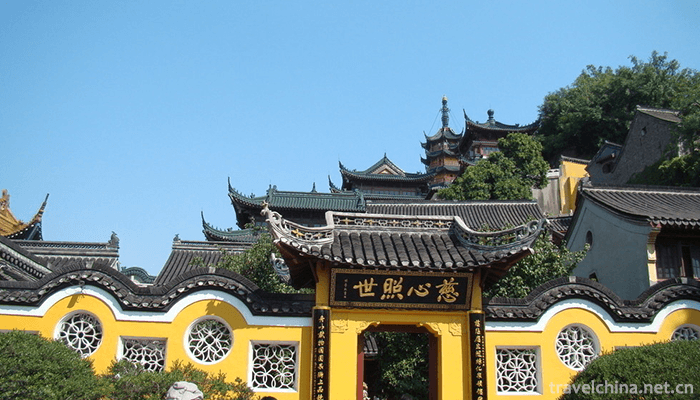
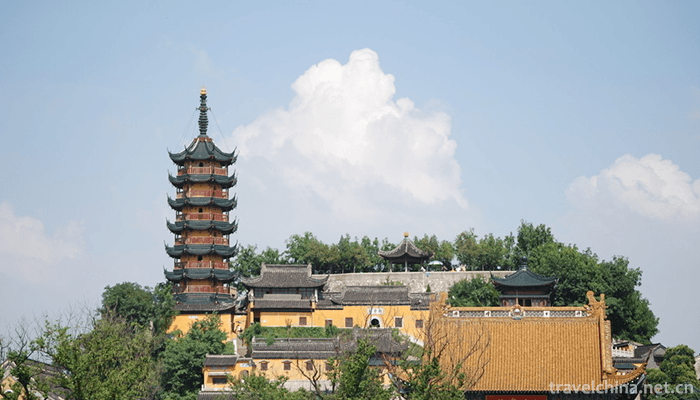
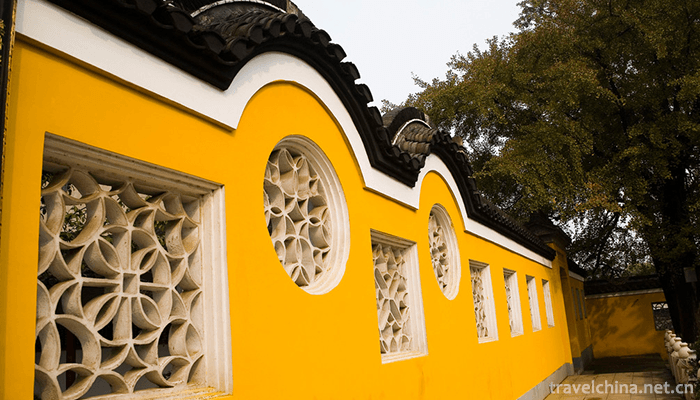

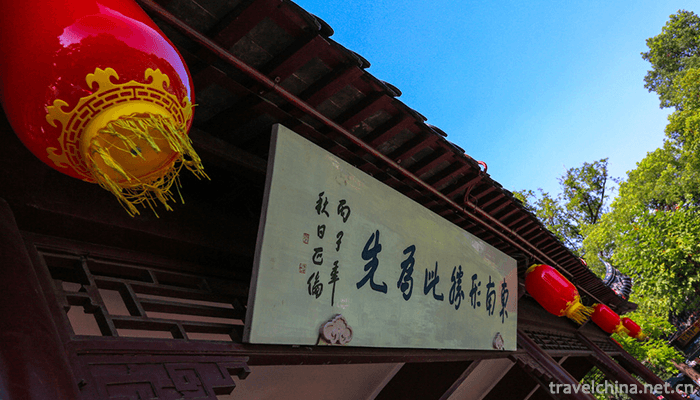
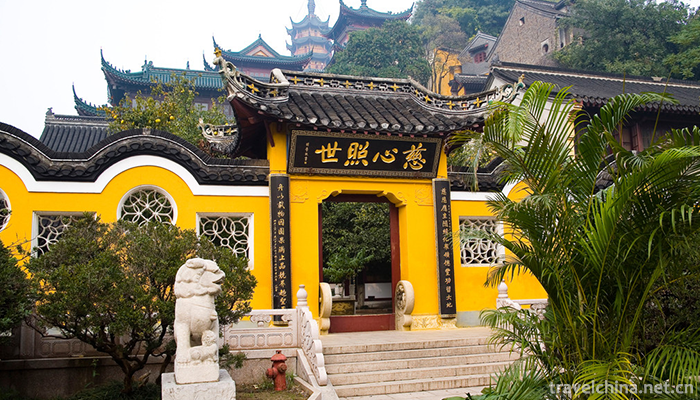
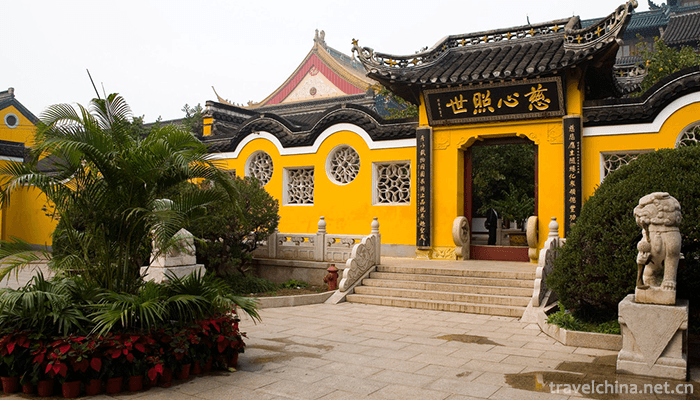
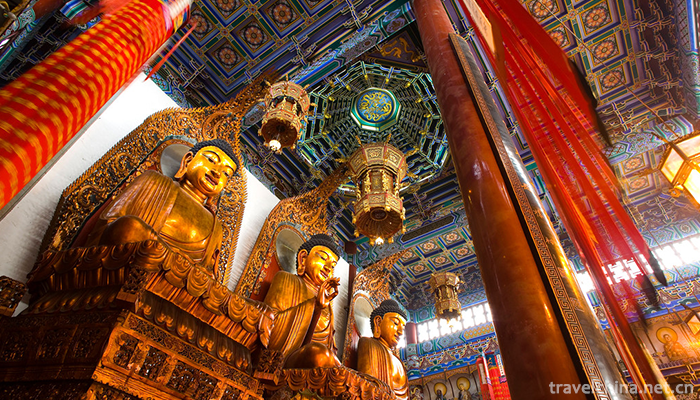
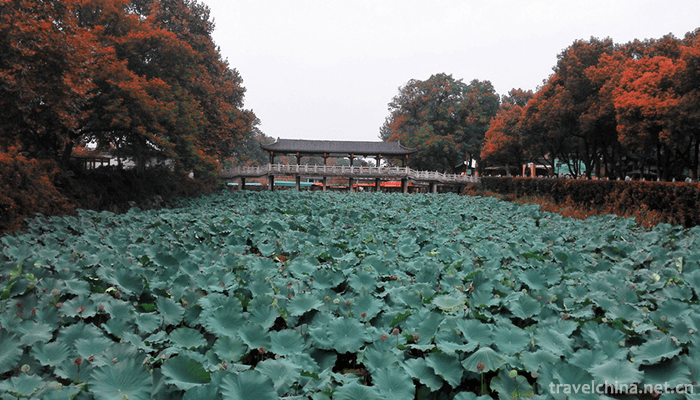
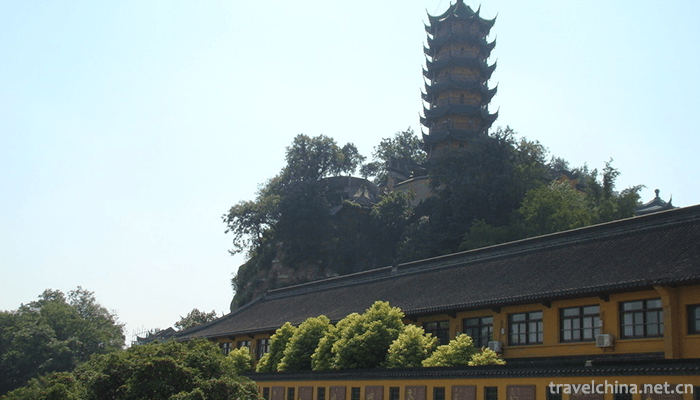
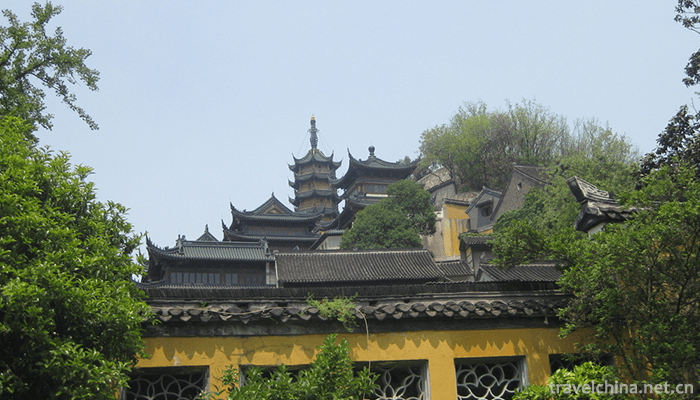
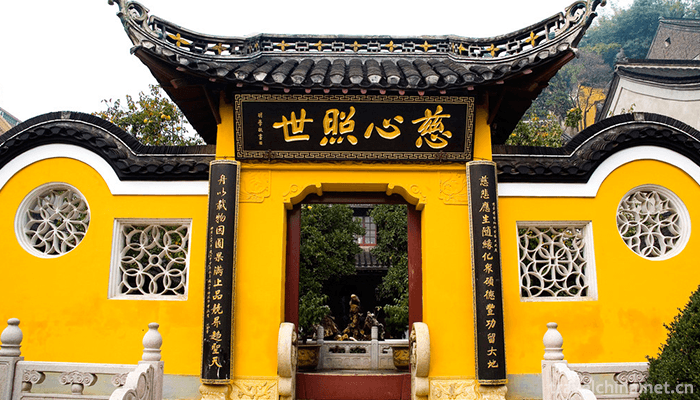
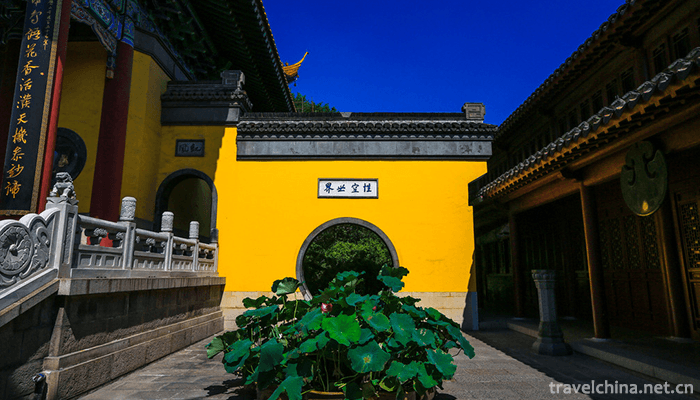

0 Questions
Ask a Question
Your email address will not be published.